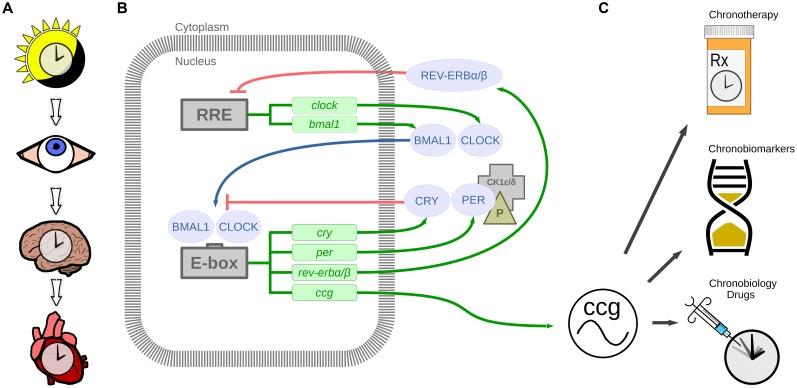FIGURE 1.
The circadian timing system. (A) Light stimulus is relayed by the eye to the suprachiasmatic nucleus in the brain, which in turn synchronizes the heart and other organ clocks to the day and night environment. (B) These signals entrain the molecular clock mechanism, which keeps 24-h time in tissues and cells via transcription-translation feedback loops. BMAL1 and CLOCK are transcribed and translated. BMAL1 and CLOCK heterodimers bind to E-box enhancer elements to promote transcription of cryptochrome (CRY), period (PER), nuclear receptor subfamily 1, group D, member 1/2 (rev-erbα/β; nr1d1/2), and other clock controlled genes (ccg). Proteins CRY and PER are phosphorylated by casein kinase 1δ/𝜀 (CK1δ/𝜀) in the cytoplasm, which translocate to the nucleus to repress CLOCK and BMAL1 mediated transcription. Additional loops exist whereby REV-ERBα/β negatively regulates bmal1 transcription by binding to RRE (REV-ERB/retinoic acid receptor-related orphan receptor (ROR) response element). This mechanism regulates 24-h transcription of clock controlled genes which in play a crucial role in diurnal cardiovascular physiology. (C) Therapeutic applications of circadian rhythms include chronotherapy by timing treatment to daily rhythmic processes, chronobiomarkers of differing rhythmic profiles between health and disease, and new chronobiology drugs targeting the circadian clock mechanism.

